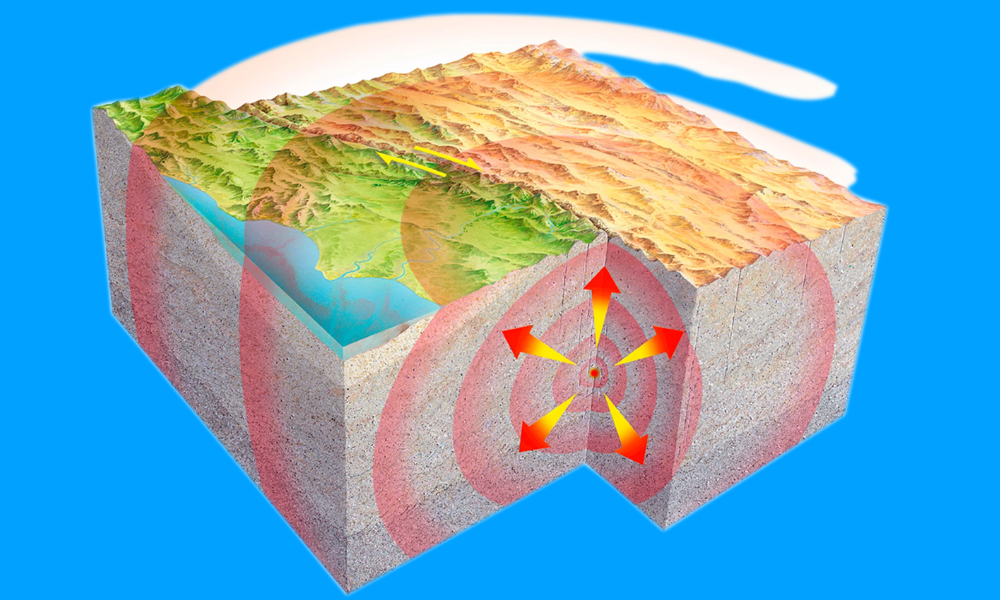
Earthquakes are natural phenomena that have fascinated and terrified humanity for centuries.
These powerful and often destructive events are the result of complex geological processes occurring deep within the Earth.
In this blog, we will explore the primary causes of earthquakes, shedding light on the forces that shape our planet and sometimes shake it to its core.
The most significant cause of earthquakes is the movement of the Earth's tectonic plates.
The Earth's crust is divided into several large and small plates that float on the semi-fluid mantle beneath them.
| Are you a Tax Lawyer in USA? 👉Transform Your Brand: Click for Metamorphosis👈 |
These plates are constantly in motion, albeit at an extremely slow pace. When two tectonic plates interact, they can converge, diverge, or slide past each other.
It is at these plate boundaries that earthquakes are most likely to occur.
a. Convergent Boundaries: When two plates move toward each other, they create intense pressure and compression. This can lead to the formation of mountains, but it can also result in earthquakes as the built-up stress is eventually released in the form of seismic waves.
b. Divergent Boundaries: When plates move away from each other, magma rises from the mantle to create new crust. This process can also cause earthquakes as the Earth's crust fractures and adjusts to the stretching and pulling forces.
c. Transform Boundaries: At transform boundaries, plates slide past each other horizontally. The friction between these plates prevents them from sliding smoothly, and when the stress overcomes this friction, it can lead to earthquakes.
Subduction zones are a specific type of convergent boundary where one tectonic plate is forced beneath another.
As the descending plate sinks into the mantle, it melts and creates intense pressure and heat.
This combination of factors can produce some of the most powerful earthquakes on Earth, as well as volcanic activity.
Faults are fractures in the Earth's crust where rocks have moved past each other.
These can occur along plate boundaries or within a single plate. When stress builds up along a fault line and the rocks can no longer resist the pressure, they suddenly slip or "fault," resulting in an earthquake.
While natural causes are the primary drivers of earthquakes, human activities can also induce seismic activity.
Activities such as mining, reservoir-induced seismicity (due to the filling of large reservoirs), and hydraulic fracturing (fracking) can alter subsurface pressure and trigger small to moderate earthquakes.
Let's delve further into the fascinating world of earthquakes and their causes.
Volcanic eruptions are closely linked to earthquakes. As magma rises through the Earth's crust, it can generate significant pressure and fracturing, leading to seismic events.
These volcanic earthquakes are often associated with the movement of magma and the shifting of rocks within and around the volcano.
While most volcanic earthquakes are relatively minor, some can be powerful, causing significant damage.
Aftershocks are secondary earthquakes that occur in the vicinity of a larger mainshock.
These events are the Earth's way of readjusting to the changes caused by the initial earthquake.
Aftershocks can continue for days, weeks, or even months after the main event and can be just as destructive as the initial quake.
Not all earthquakes occur near the Earth's surface. Some originate deep within the Earth's mantle or core.
These deep-focus earthquakes, typically occurring at depths of over 300 kilometers (186 miles), are less common but can be extremely powerful.
They are often associated with the complex movements of material in the Earth's interior.
Earthquakes are the result of stress accumulation over time and its eventual release.
Rocks in the Earth's crust are constantly under pressure due to tectonic forces.
When the stress exceeds the strength of the rocks, they rupture, causing seismic waves to propagate outward from the fault plane.
Understanding the physics of seismic waves is crucial in comprehending how earthquakes propagate.
There are two primary types of seismic waves: body waves (P-waves and S-waves) and surface waves (Love waves and Rayleigh waves). These waves carry the energy released during an earthquake and are responsible for the shaking and damage caused on the Earth's surface.
Given the inevitability of earthquakes in regions near tectonic plate boundaries, earthquake preparedness is essential.
Communities in earthquake-prone areas must have robust building codes, early warning systems, and disaster response plans in place to minimize casualties and damage.
In conclusion, earthquakes are a product of the Earth's dynamic and ever-changing nature.
While we cannot prevent them, our understanding of their causes and mechanisms allows us to prepare and adapt to the inevitable seismic events. Earthquakes serve as a reminder of the incredible geological forces at work beneath our feet and the importance of being resilient in the face of natural disasters.